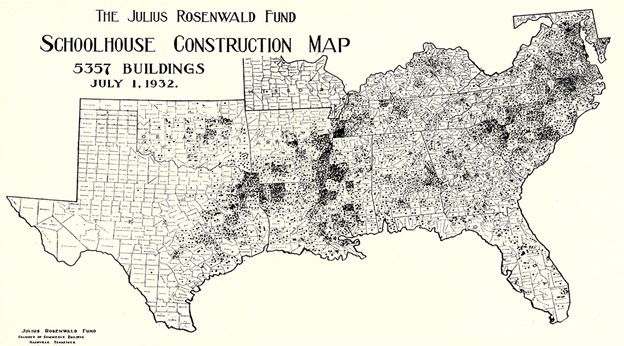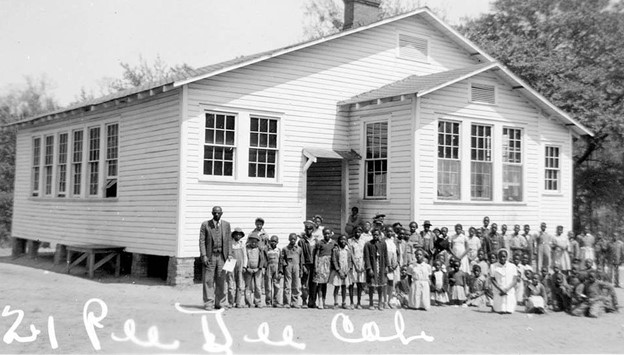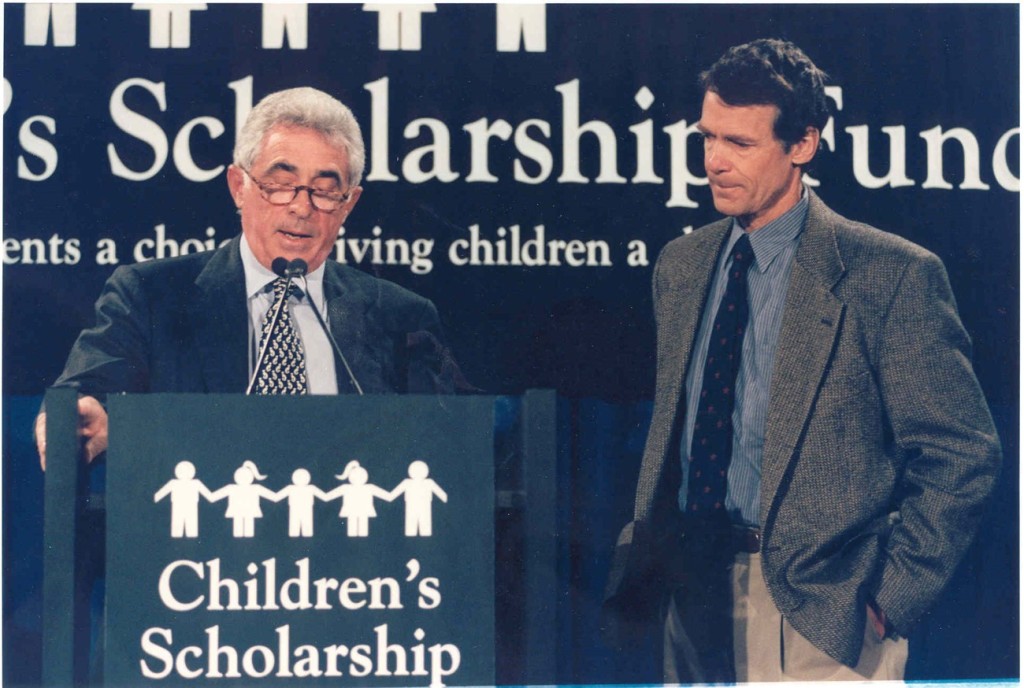
Rosenwald schools served as a forerunner of the modern choice movement. As the Smithsonian Magazine explained:
Between 1917 and 1932, nearly 5,000 rural schoolhouses, modest one-, two-, and three-teacher buildings known as Rosenwald Schools, came to exclusively serve more than 700,000 Black children over four decades. It was through the shared ideals and a partnership between Booker T. Washington, an educator, intellectual and prominent African American thought leader, and Julius Rosenwald, a German-Jewish immigrant who accumulated his wealth as head of the behemoth retailer, Sears, Roebuck & Company, that Rosenwald Schools would come to comprise more than one in five Black schools operating throughout the South by 1928.
The Rosenwald schools played a vital role in advancing Black education in the American South and resembled the later charter school movement in important ways, with philanthropy providing the building infrastructure and other startup needs, with the states paying for the ongoing operating funding. Like charter schools today, the states in question did not fund Rosenwald schools on an equitable per pupil basis. Nevertheless, they made a lasting contribution.

The Rosenwald school movement began a long decline with the passing of Julius Rosenwald in 1932. Rosenwald had hoped that states would continue to build these schools, but this hope was dashed. Concentrated in rural areas and operating in the Jim Crow South, these schools were incredibly disadvantaged in advocating their cases in state legislatures. While a few of the Rosenwald buildings continue to exist, they stopped functioning as schools many decades ago.

A more enduring legacy awaits latter day education philanthropists such as John Walton and Ted Forstmann. Together Walton and Forstmann founded the Children’s Scholarship Fund, which has granted almost a billion dollars in scholarships. Unlike Rosenwald, Walton and Forstmann have seen a now majority of states take up the role of financing alternative schools through mechanisms such as vouchers, tax credits and education savings account programs. A whole new generation of small community schools has emerged in the process, such as those featured here on Reimagined:

Unlike the Rosenwald schools, or sadly even charter schools in most states, the next generation of community schooling has already included all types of communities, leading to a broader base of support. Franklin Roosevelt’s New Dealers figured out that the best way to secure social insurance programs was to include everyone somewhere back around the time of Rosenwald’s death. Accordingly, Social Security is alive and well while Rosenwald schools lived their time but then faded due to a lack of political support.
Many decades passed before the choice movement embraced the New Deal insight, but much better late than never. Now America families and educators have a movement built to last.


